Carnelian
A beautiful reddy orange semi-precious stone comprised of Chalcedony / Quartz and coloured by inclusions and impurities of Iron Oxide.
As with most stones, Carnelian looks better when it has been polished and is often sold as such – but we do sell some rough pieces too. The strength of colour really depends on the locale – we sell pieces from all around the world.
Carnelian can even be found by beachcombing on beaches around the UK.
Showing all 8 results
-
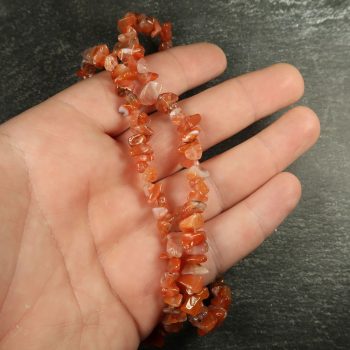
Carnelian bead strands
£3.00 – £5.00 -
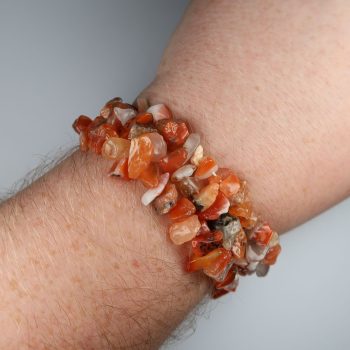
Carnelian Bracelets
£2.00 -
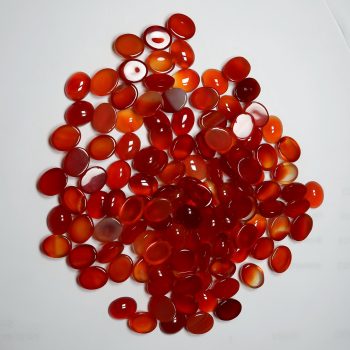
Carnelian Cabochons
£2.00 – £7.00 -
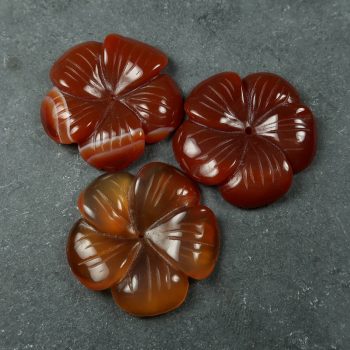
Carnelian Features
£2.95 -
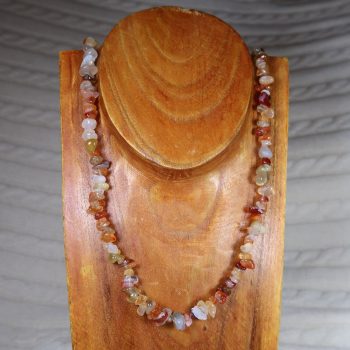
Carnelian necklaces
£3.00 – £3.95 -
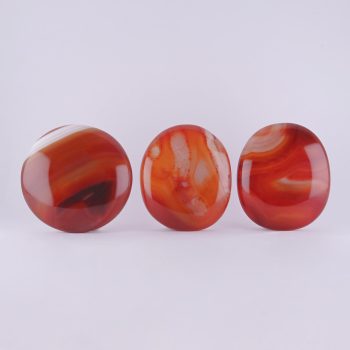
Carnelian Palmstones
£5.00 -
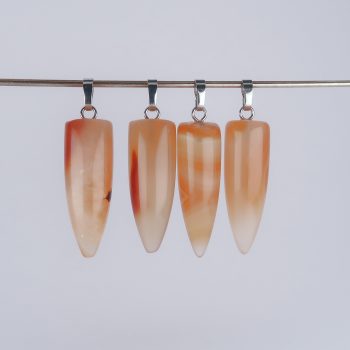
Carnelian Pendants
£2.00 -
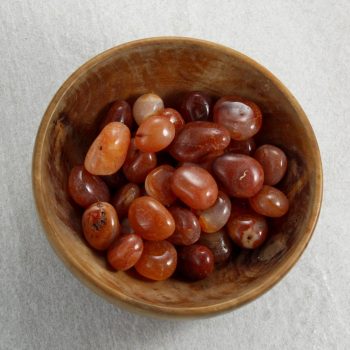
Carnelian Tumblestones
£2.00 – £3.50
Appearance, Uses and History
There seems to be quite a lot of difficulty online in identifying exactly what the difference between Carnelian and other forms of banded Chalcedony are.
Sard is a brown to brownish red, transparent to translucent variety of Chalcedony.
Onyx is a form of Chalcedony, sometimes used to describe solid black or banded black and white Chalcedony.
Agate is a multi-coloured banded form of Chalcedony.
Chalcedony is a microcrystalline variety of Quartz and occurs in many varieties.
Carnelian is a dull red variety of Chalcedony.
Sardonyx, specifically, is a mixture of Sard and Onyx, consisting of parallel bands of brown, white, and red, sometimes with black bands. It could be considered an Onyx or an Agate depending on the specific definition.
Carnelian has been used as a decorative stone since antiquity, with finds from the Neolithic, as well as later on, throughout the Bronze Age. It was widely used by the Romans to make engraved signet rings and gems for imprinting seals – hot wax does not stick to Carnelian.
Sard and Carnelian were used in Ancient Egypt to make scarabs, as well as Assyrian cylinder seals.
The name Carnelian was likely not the original term – it’s likely that Cornelian was used before this term; however, to modern eyes and ears, Cornelian just doesn’t look right!
Carnelian is still used as a decorative stone, typically in lower end jewellery. It is usually cut into cabochons or beads, and rarely faceted. Plenty of other decorative objects are cut from Carnelian too.
Locales
Carnelian can be found worldwide, as it is a rather common mineral. Most of the Carnelian sold online comes from a few sources – Brazil, India, Madagascar, or the USA.
It can even be found by beachcombers in the UK.
Mineralogy
Hazards and Warnings
Almost all rocks, minerals (and, frankly, almost all other substances on earth) can produce toxic dust when cutting, which can cause serious respiratory conditions including silicosis.
When cutting or polishing rocks, minerals, shells, etc, all work should be done wet to minimise the dust, and a suitable respirator or extraction system should be used.
Translations
Some languages may not make a distinction between ‘Carnelian’, ‘Sard’ and ‘Agate’ so these auto translations may not be the most reliable.
Arabic:
- عقيق أحمر
- كارنيليان
Hindi:
- कारेलियन
Portuguese:
- cornalina
Bengali:
- কার্নেলিয়ান
Indonesian:
Punjabi:
English:
- carnelian
- cornelian
Italian:
- corniola
Russian:
- сердолик
French:
- cornaline
Japanese:
- カーネリアン
Spanish:
- cornalina
German:
- Karneol
- Carneol
Korean:
Thai:
- คาร์เนเลียน
Gujurati:
- કાર્નેલિયન
Mandarin and Traditional Chinese:
Urdu:
